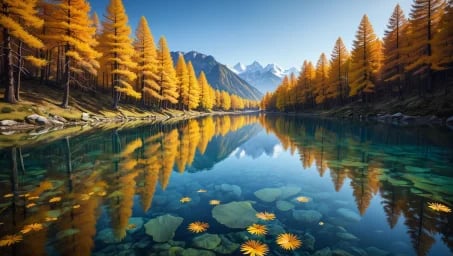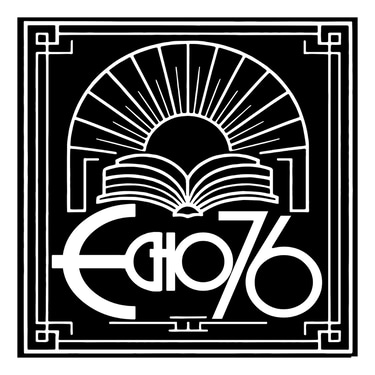Jiuzhaigou Valley: China’s Most Enchanted Daydream
NATUREASIACHINANATURAL ATTRACTIONUNESCOLAKENATIONAL PARKECHOES OF ELSEWHERE


Sichuan Province, China
If someone whispered into your ear, “Hey, want to visit a secret valley where sapphire lakes reflect fire-colored forests, waterfalls tumble like silk ribbons, and fairy-tale villages hide among snowy peaks?”-you’d probably assume they were describing a Studio Ghibli film. But no. That place is very real, and it’s called Jiuzhaigou Valley.
Located in northern Sichuan Province, tucked against the eastern edge of the Tibetan Plateau, Jiuzhaigou (九寨沟) is the kind of destination that makes your camera nervous. There’s just too much beauty for one lens to handle. You’ll leave with 2,000 photos, most of them nearly identical, and yet you won’t delete a single one.
This is not your average national park. This is China’s most photogenic secret, a UNESCO World Heritage Site and Biosphere Reserve wrapped in alpine forests, painted lakes, and-if you’re lucky-a dusting of snow. Whether you’re searching for “Jiuzhaigou Valley travel guide,” “how to get to Jiuzhaigou,” or “is Jiuzhaigou real or CGI?”-you’re about to discover why this wonderland lives rent-free in the hearts of everyone who’s ever set foot there.
So... What Is Jiuzhaigou?
Literally translated, Jiuzhaigou means “Valley of Nine Villages.” It’s named after the nine ancient Tibetan villages scattered throughout the valley, some still inhabited today. But let’s be honest-most people come for the kaleidoscope of lakes, tiered waterfalls, snow-capped peaks, and rainbow-colored forests that change costume with every season.
At 2,000 to 4,500 meters above sea level, the air is crisp, the sky unusually blue, and the landscape almost suspiciously perfect. Scientists explain the valley’s vivid hues with phrases like “calcium carbonate deposits” and “high-altitude hydrology.” Travelers just stare open-mouthed and say things like, “Is this… legal?”
Getting to Jiuzhaigou: The Long Road to Paradise
Let’s not sugarcoat it-getting to Jiuzhaigou is a bit of an epic quest. But so was Lord of the Rings, and look how well that turned out.
Option 1: Fly to Jiuzhai Huanglong Airport (JZH)
A 1-hour flight from Chengdu will get you 88km from the valley. From the airport, it’s a 1.5–2 hour drive through winding mountain roads. Not for the faint of stomach, but the views help.
Option 2: Overland Adventure
You can also take a bus or private car from Chengdu-expect an 8-10 hour drive with scenery that gets progressively more jaw-dropping. Stop for yak meat, yak butter tea, or simply to wonder how the driver is still alive after that last hairpin turn.
Pro tip: Visit in the shoulder seasons, when roads are open, crowds are fewer, and the weather is still playing nice.
What to See in Jiuzhaigou (Spoiler: Everything)
The valley splits into a Y-shaped layout with three major arms: Shuzheng Valley, Rize Valley, and Zechawa Valley. Each is absurdly beautiful, and each demands your undivided attention.
1. Five Flower Lake (Wuhua Hai)
The icon. This lake looks like someone spilled a watercolor palette and then added X-ray vision. Beneath the crystal surface lie sunken trees, shifting sediments, and colors ranging from turquoise to jade to teal, often at the same time. It’s the valley’s unofficial Instagram ambassador.
2. Nuorilang Waterfall
One of China’s widest waterfalls, Nuorilang crashes elegantly down a mossy cliff near the main entrance. It’s loud, proud, and perfectly framed by golden larches in autumn.
3. Mirror Lake (Jinghai)
Early in the morning, this lake lives up to its name by reflecting the entire sky, the trees, and occasionally, your stunned expression.
4. Long Lake (Chang Hai)
The highest and largest lake in the park, Long Lake is long, deep, and brooding. Surrounded by snow-dusted peaks, it gives off strong “I host forest banquets for moon spirits” energy.
5. Shuzheng Village
One of the few Tibetan villages visitors can walk through. Try barley wine, check out the prayer flags, and buy souvenirs from people whose ancestors have lived here for centuries.
6. Pearl Shoal and Waterfall
Not just another pretty cascade. The water spreads thin over stone like a curtain of glass beads, before tumbling off into the trees. You half expect to see a nymph wading through it.
When to Visit Jiuzhaigou: Choose Your Flavor of Magic
Spring (April–May): New blossoms, melting snow, and bright skies. The park reawakens with a soft, watercolor vibe.
Summer (June–August): Lush green forests and powerful waterfalls. Also, peak tourist season. Brace for selfie sticks.
Autumn (September–November): The absolute best time to visit. Think gold, crimson, copper, and flaming orange reflecting off turquoise lakes. Even the air feels cinematic.
Winter (December–February): Sparse crowds, frozen waterfalls, snow-covered pines-and a peaceful silence that feels positively monastic.
What to Bring (Aside from a Willingness to Gasp Repeatedly)
Good walking shoes: The boardwalks are extensive. Your feet will know what you did.
Layers: The weather can go from sunny to glacial in a single hour.
Snacks and water: Food inside the park is… limited, let’s say.
Cash: Some village stalls don’t take cards, and you may want yak-themed trinkets.
Patience: Buses ferry you between zones, but lines can stretch if you’re visiting during holidays.
Where to Stay
Stay in Jiuzhaigou Town (Zhangzha), just outside the park entrance. Options range from comfy lodges to five-star hotels with Tibetan décor and surprisingly good Wi-Fi.
Luxury: Hilton Jiuzhaigou Resort – mountain luxury with valley views.
Mid-range: InterContinental Resort Jiuzhai Paradise – popular, palatial, and convenient.
Charming: Tibetan-style guesthouses and boutique inns-warm hosts, yak meat, starry skies.
Common Questions:
Is Jiuzhaigou worth visiting?
That’s like asking if the sky is worth looking at. Yes. A thousand times yes.
Do I need a guide?
Not necessarily. Park buses and signage are visitor-friendly, but a local guide will enrich your visit with legends, ecology, and the occasional impromptu Tibetan proverb.
Can I visit Huanglong as well?
Yes-Huanglong National Scenic Area is about 3 hours away and famous for its travertine pools. If you’ve come this far, go the extra valley.
Is it crowded?
In peak season? Yes. In off-season? Still yes, but less so. Jiuzhaigou is beloved in China. Be prepared, be patient, and practice your zigzag overtaking technique on the boardwalks.
Final Thought: Jiuzhaigou Is Not a Place-It’s a Spell
There are places you visit and places that visit you-lingering long after you’ve left. Jiuzhaigou is the latter. You’ll carry its lakes in your memory like gemstones in your pocket, and its pine-scented air in the corners of your imagination.
And one day, far from the Sichuan mountains, you’ll see the light hit a puddle just right, and you’ll think, that’s almost Jiuzhaigou-but not quite.
Because nothing is.




